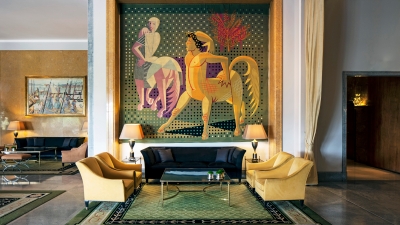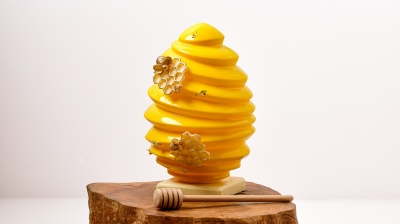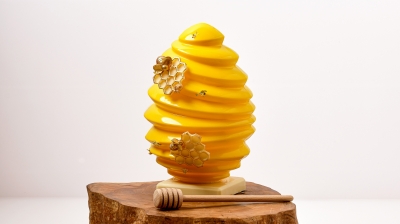Visit a Veritable Museum of Portuguese Contemporary Art Inside Four Seasons Hotel Ritz Lisbon
Four Seasons Hotel Ritz Lisbon invites art lovers to admire one of the country's largest and most important privately-owned collections of mid-twentieth century Portuguese art in loco.
In 1959 the iconic Hotel Ritz, as it was then named, was built with the aim of imparting upon the city of Lisbon a modern legacy. At the time a host of notable local artists were invited to bestow their own individual and vibrant legacy of decorative arts.
The Hotel’s unique collection is representative of national values and the independence of the Portuguese spirit. The eclectic mix of sculptures, paintings and tapestries makes the Hotel as veritable a museum of Portuguese contemporary art as any found on the steep climbs of the city outside.
Collection Highlights
Gracing the lounge at lobby level named after the artist himself, Almada Negreiros’ Centaur trilogy of Portalegre tapestries was inspired by the constellation Centaurs. The artist’s inspiration by Picasso and his relish of geometry are clearly visible in the three artworks - in the centaurs’ exhibitionist pose, provocative posture and their embrace. The mesmerising marble mural sgraffito work A Ceifeira (The Harvest) is also undoubtedly one of the Hotel’s hallmarks. Other notable works by the artist, who referred to himself a futurist artist, can be found in the nearby Calouste Gulbenkian Foundation and the Museum of Contemporary National Art in Chiado.
The two canvas oil paintings by Carlos Botelho are a perfect mix of reality and fiction of Lisbon in the late fifties. In the Vistas de Lisboa (Views of Lisbon) we see the tiles, roofs and balconies characteristic of the riverside area of the city. If you’ve visited the area you’ll recognise the Casa dos Bicos and the Sé Cathedral. The Barcos no Tejo (Boats on the Tagus) depicts the hustle and bustle of the Tejo River. You can see the arrival of boats with merchandise, men carrying salt to land, as well as the varinas - women who sold fish, carrying them in baskets on their heads and calling out to customers - all but a distant memory now.
It was not by chance that the two most important artists, in the opinion of international art critics of the period, Almada Negreiros and Carlos Botelho, were chosen for the main lounge, an area of great prestige.
Coincidence – or not - at the heart of the collection, the As Quatro Estações (Four Seasons) tapestry designed by Sarah Afonso in1959 honours the name of the Hotel today. This unique tapestry shows the four seasons of the year in feminine forms. The artist was the wife of previously mentioned José de Almada Negreiros, considered one of the pivotal figures of the Modernist movement in Portugal.
Commissioned for the Hotel’s entrance hall to the grand ballroom, the intricate work in lacquered wood with mother of pearl inlays executed by Arnaldo Louro de Almeida, take the Bambús design by Pedro Leitão to a whole other level. This elegant mural transmits an elegant oriental inspiration, and like a thee-star Michelin restaurant: is “worth a special journey” to this part of the Hotel.
The significance of ceramics and tiles in the context of Portuguese art was also not forgotten and work was ordered from the most renowned artists of the period. Querubim Lapa’s naïve interpretation of Lisboa in the pillar at the foot of the ballroom’s suspended stairwell is one clear example, as is Estrela Faria’s As Sete Colinas de Lisboa (Lisbon’s seven hills) – can you spot all seven?
Lagoa Henriques is often remembered as the artist behind the much-photographed bronze statue of Fernando Pessoa sitting outside A Brasileira café in the buzzing Chiado neighbourhood, and the The Secret statue in the Eduardo VII Park opposite the Hotel. Inside, at Varanda Restaurant you can find the larger-than-life bronze Sea Horses symbolising strength and power, as well as the matt golden conch light appliques illuminating the halls at lobby level.
More for Art Lovers
Should you want to explore the collection further, the Hotel has launched a free iPad art app that can be used as a personal art curator and tour guide. With intuitive, easy-to-use features and tools, the app boasts a library of high resolution images and descriptive text, providing a fascinating historical and cultural walk through the Hotel’s outstanding collection. For the little ones, the app includes a fun and engaging memory game, challenging them to recall images of artwork they have spied around the Hotel.
We asked Daniela Fonseca, one of the Hotel’s lively Concierges, an art lover herself, if besides the usual museums she had any tips for explorations outside the Hotel, and she mentioned how the stations of the city’s subway - which were inaugurated the same year as the Hotel, are also true masterpieces underground – with works by many of the same artists as those in the Hotel, further establishing their status as the greatest creative minds of the time.
And if you really can’t get enough art, she goes on to suggest hopping on a vintage sidecar to discover Lisbon’s cutting-edge street art on an exhilarating, tailor-made Street Art experience, led by an art guide and a designated driver.















